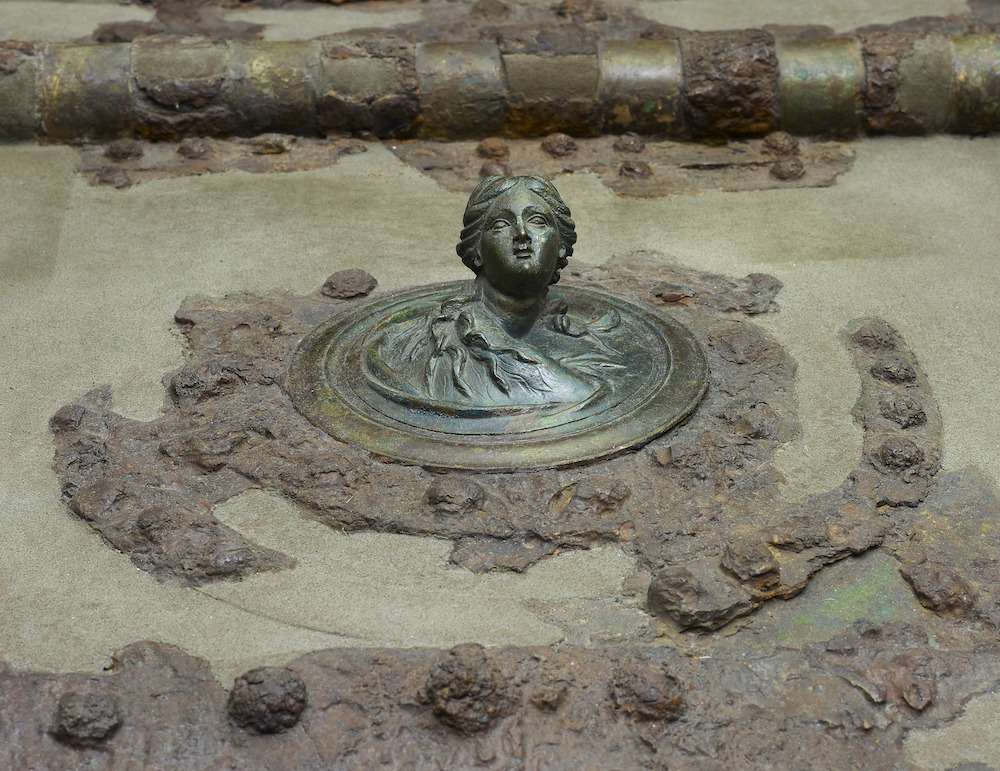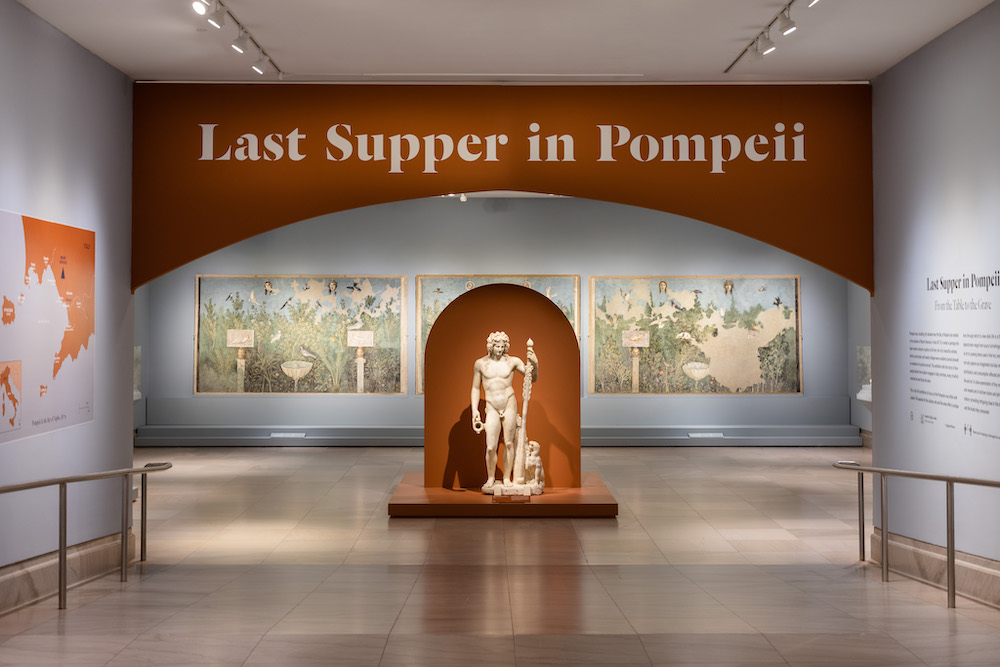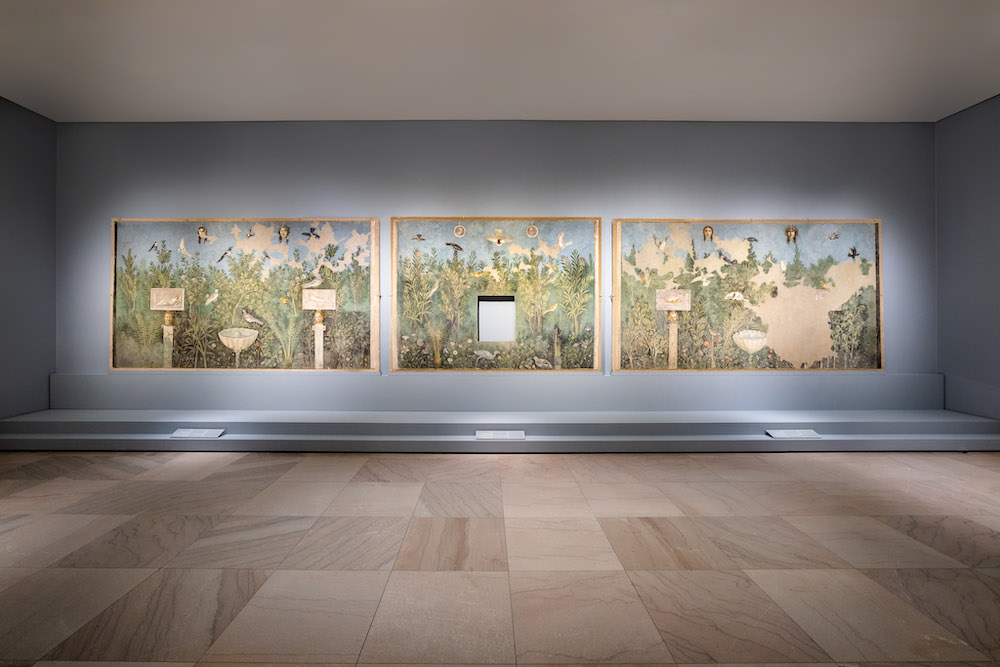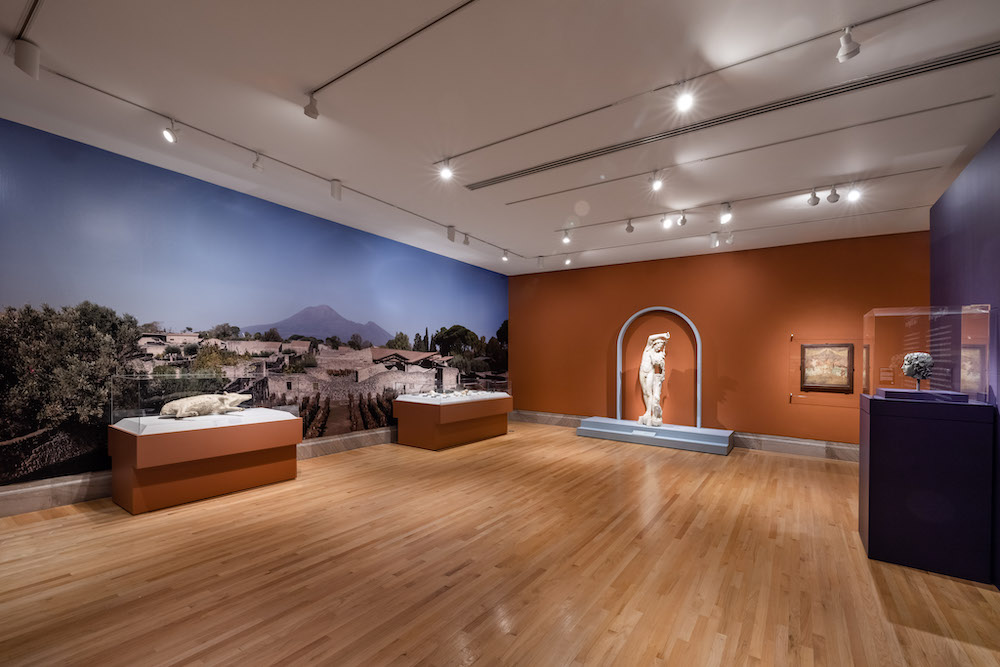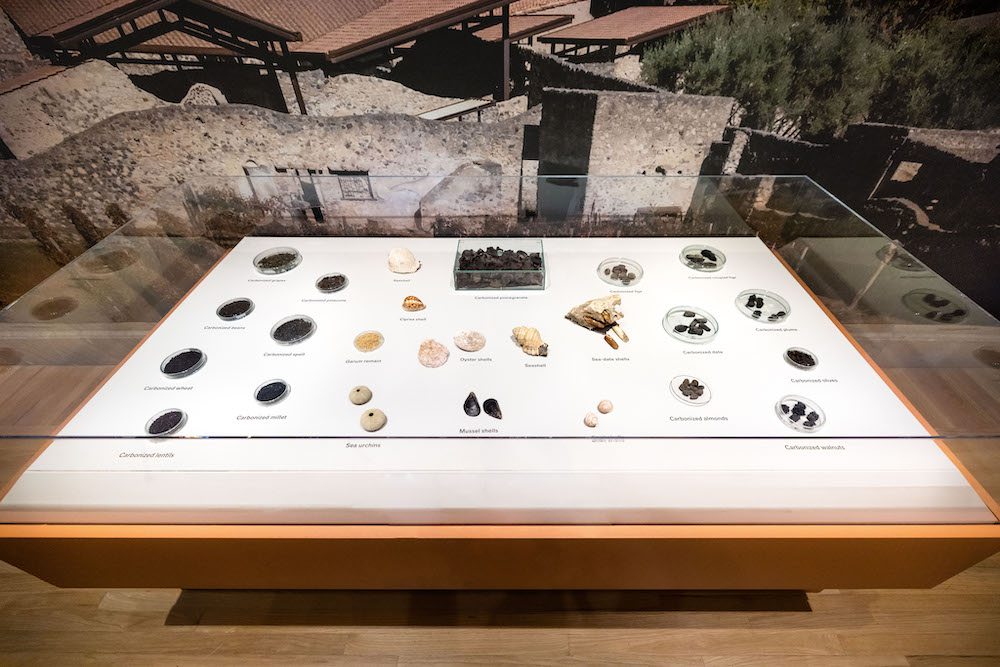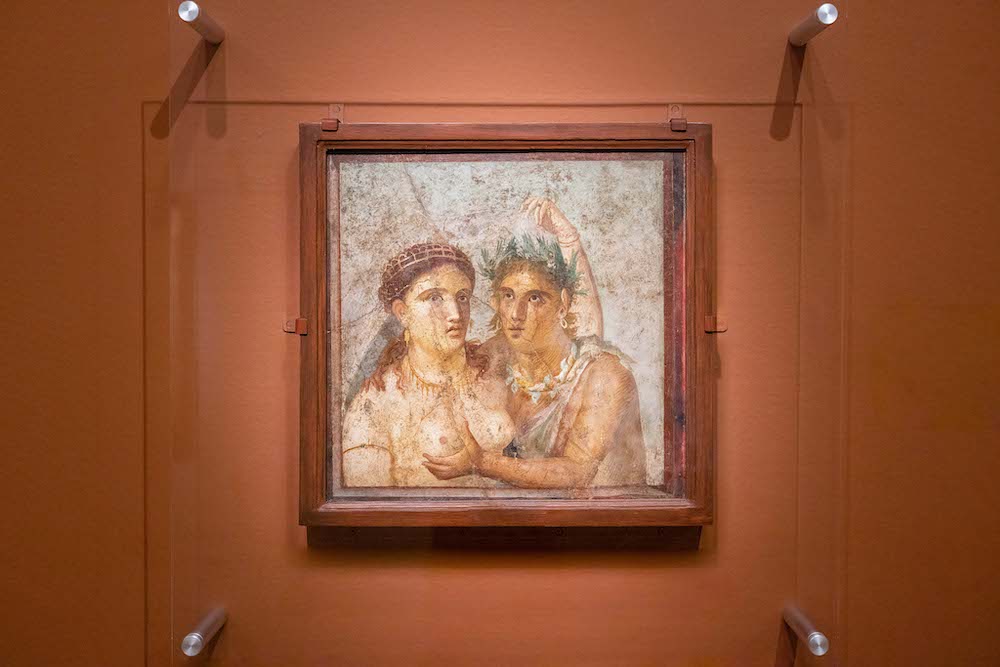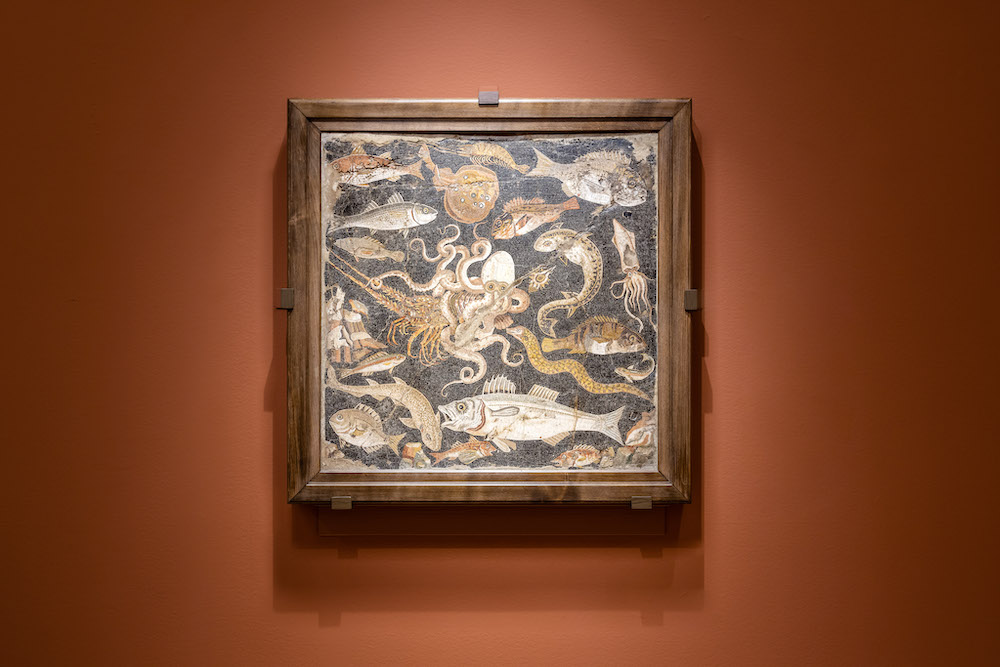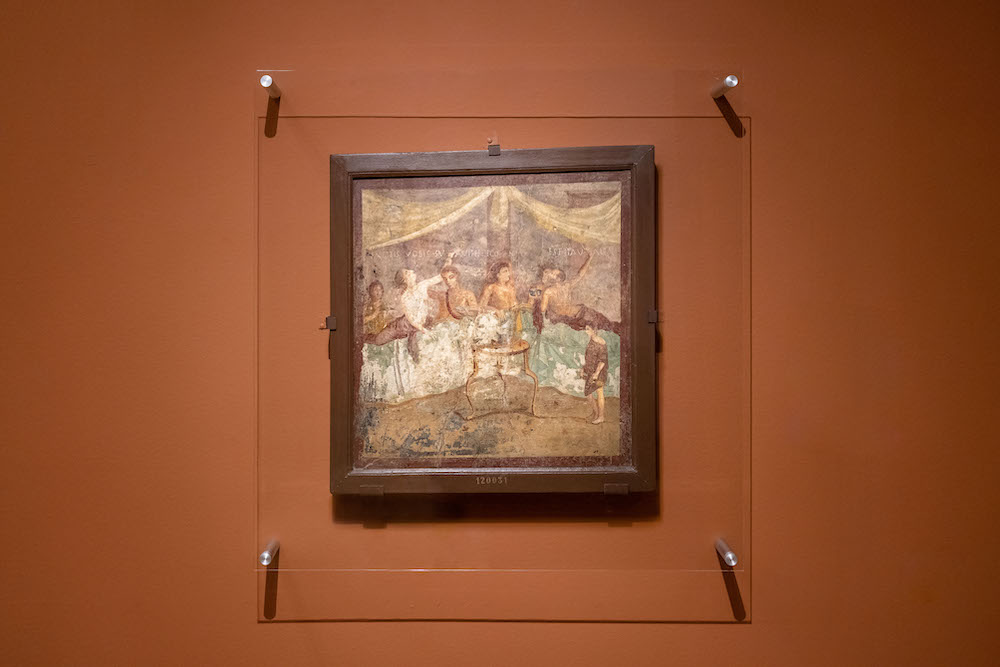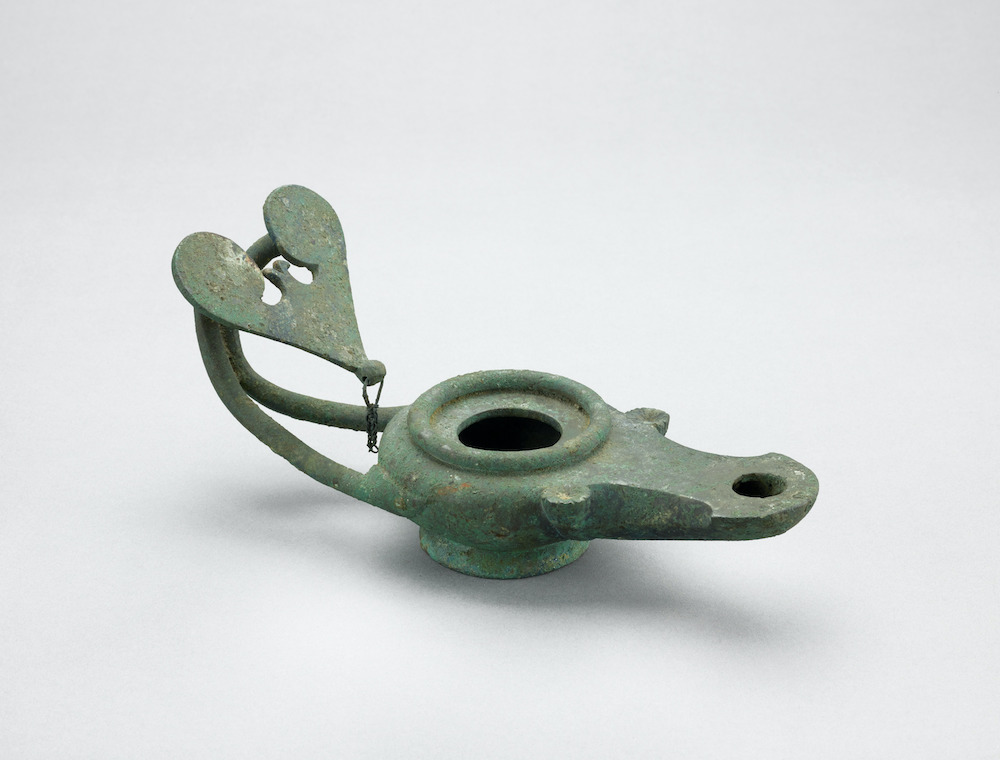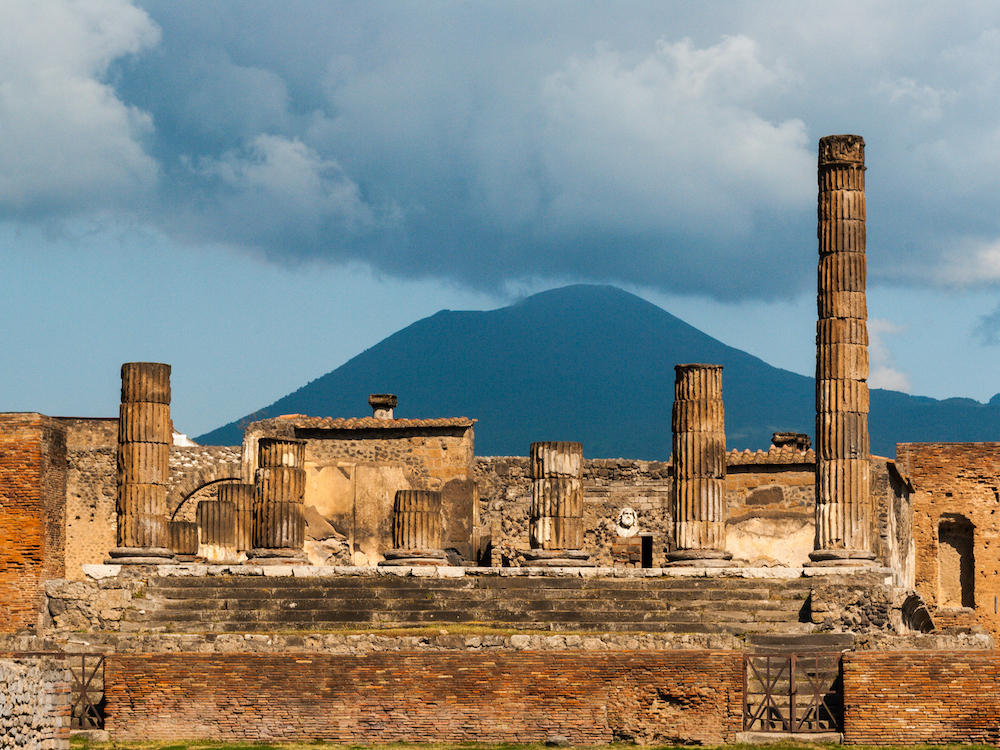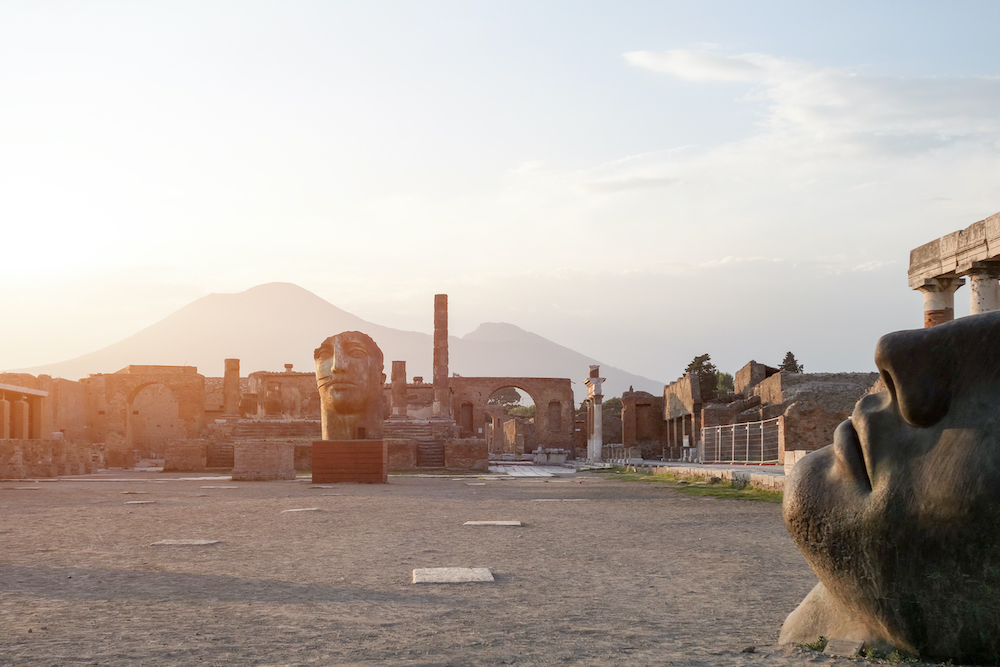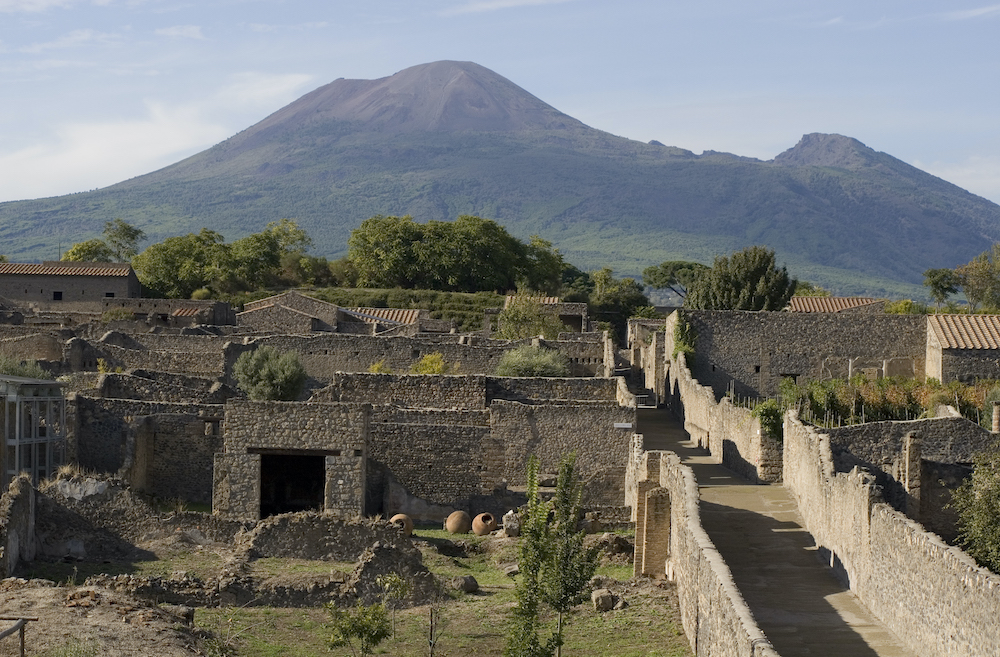About to preview Last Supper in Pompeii at the Legion of Honor, I scanned the map at the entrance, trying to locate the ancient city. An accommodating staffer explained, “What Napa Valley is to San Francisco, Pompeii was to Rome.” I also kept in mind something I’d heard in a podcast by University of Colorado Professor of Classics and Anthropology Travis Rupp, who maintains that the study of food and beverages “creates a tangibility to history you can’t necessarily get from just studying mosaics.” So, looking up at a splendid marble statue of Bacchus, the god of wine and fertility, I set out with visions of fried artichokes and caccio e pepe. However, I learned that, while pasta had yet to make it onto a menu, dormice were luxury items worthy of long preparation, as demonstrated by the pierced holes in a large amphora where the prized rodents were fattened up for feasting.
If that doesn’t whet the appetite, give a nod to Bacchus and proceed to the frescoed panels filled with birds and flowers that encased a dining room which opened to a fantasy garden. The show gives an intimate tour of a place and time where food and wine played such dominant roles in social life. One fresco shows that, yes, dining in style meant reclining in style. Another depicting Mt. Vesuvius shows how grapes were, and are grown, pergola style. Another presents an official giving bread away to the townsfolk, who by and large, didn’t have their own kitchens and primarily ate in taverns. As well as an actual loaf of carbonized bread that was found in an oven, there are blackened “relics” of pinecones, walnuts, beans, lentils and pomegranates. Amazingly, several examples of glassware survived, including mass produced, rough “face mugs”, as well as a beautiful, cobalt blue, ribbed bowl. Naturally, if food and wine are so thoroughly enjoyed, can a phallus be far behind? In fairness, the phallus was considered good luck, so be prepared for statues and windchimes celebrating size and male feats of - strength.
Silver cups, platters, tavern signs, food molds and myriad housewares all play tangible supporting roles in relating stories about the people of Pompeii, but perhaps the mosaics do provide the most vivid memories. One tessarae forms an amazing, accurate panel full of marine life in the Bay of Naples. Another celebrates the love of Greek myths, while still another advertises a mackerel fish sauce. But maybe the most striking was found in an ancient dining room, a skeleton holding two wine jugs, a reminder that Death always hovers as an extra guest. The Roman poet Horace coined Carpe Diem, his reminder to “seize the day”.
The show closes with the resin coated body of a victim of the volcano a reminder of the thousands of people lost in the eruption of the volcano. A few of her small gold rings are displayed in a case. The last view is an animated recreation by Zero One that starts with the rumbling flutter of terra cotta roof tiles. Small earthquakes preceded the morning of the eruption which rained ash and volcanic mud for days, where debris grew six inches every hour. So, Seize the Day, even if stuffed dormouse isn’t your meal of choice. —Gwynned Vitello
Last Supper in Pompeii shows at the Legion of Honor in San Francisco May 7 through August 29, 2021



